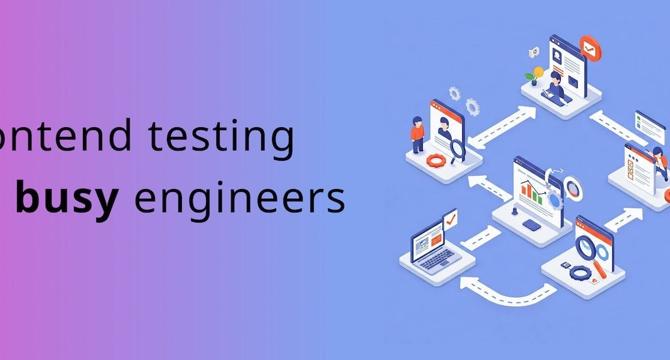Hackernoon
1M
139

Image Credit: Hackernoon
Frontend Testing for Busy Engineers: A Guide
- Frontend developers often work on projects with no or minimal tests, impacting the effectiveness of testing. The article discusses maximizing test impact with minimal effort, challenges of applying the testing pyramid to frontend development, and effective practices for testing web applications efficiently.
- Key areas to test in frontend applications include HTML/JSX Markup, requests to backend APIs, state management, and frontend business logic. The focus should be on ensuring correct UI rendering and component behavior, as well as testing API calls and state management changes.
- The traditional testing pyramid comprises unit tests, integration tests, and end-to-end (E2E) tests. The pyramid suggests prioritizing unit tests for ease of implementation. However, strict adherence to this model may not always be feasible in frontend development.
- While some projects deliberately choose not to use automated tests due to various reasons like early-stage startups or legacy systems, essential tools like static analysis and error monitoring can enhance code quality and development efficiency.
- As frontend applications become more complex, manual regression testing becomes impractical, eventually leading back to automated testing. E2E testing is highlighted as a valuable testing approach for checking application functionality from an end user's perspective.
- E2E testing tools like Playwright, Cypress, Selenium, and Puppeteer are recommended for implementing tests to validate user stories and critical business functions. Prioritizing smoke tests, critical path tests, and continuously expanding test coverage are key E2E testing strategies.
- Despite the benefits of E2E testing, challenges such as flaky tests, test run speed, and managing test data exist. In cases where E2E testing faces challenges, turning them into integration tests with mocked APIs can offer a simpler alternative.
- Integration tests, focusing on testing the frontend in isolation from the backend by mocking API calls, offer a faster and more stable testing alternative compared to E2E tests. However, they provide lower reliability guarantees as they exclude the entire stack.
- Unit tests play a role in testing complex logic, library code, and aiding refactoring and legacy code support. The article suggests minimizing the number of unit tests by focusing on critical logic and not writing tests for trivial functionality or highly covered areas.
- An optimal automated testing strategy for the frontend involves utilizing static analysis and error monitoring tools, prioritizing E2E tests for key scenarios, leveraging integration tests when E2E tests face challenges, and minimizing the number of unit tests to focus on critical and complex logic.
- Effective frontend testing emphasizes quality over quantity and focuses on critical scenarios and sections of the application to ensure proper functionality and user satisfaction.
Read Full Article
8 Likes
For uninterrupted reading, download the app